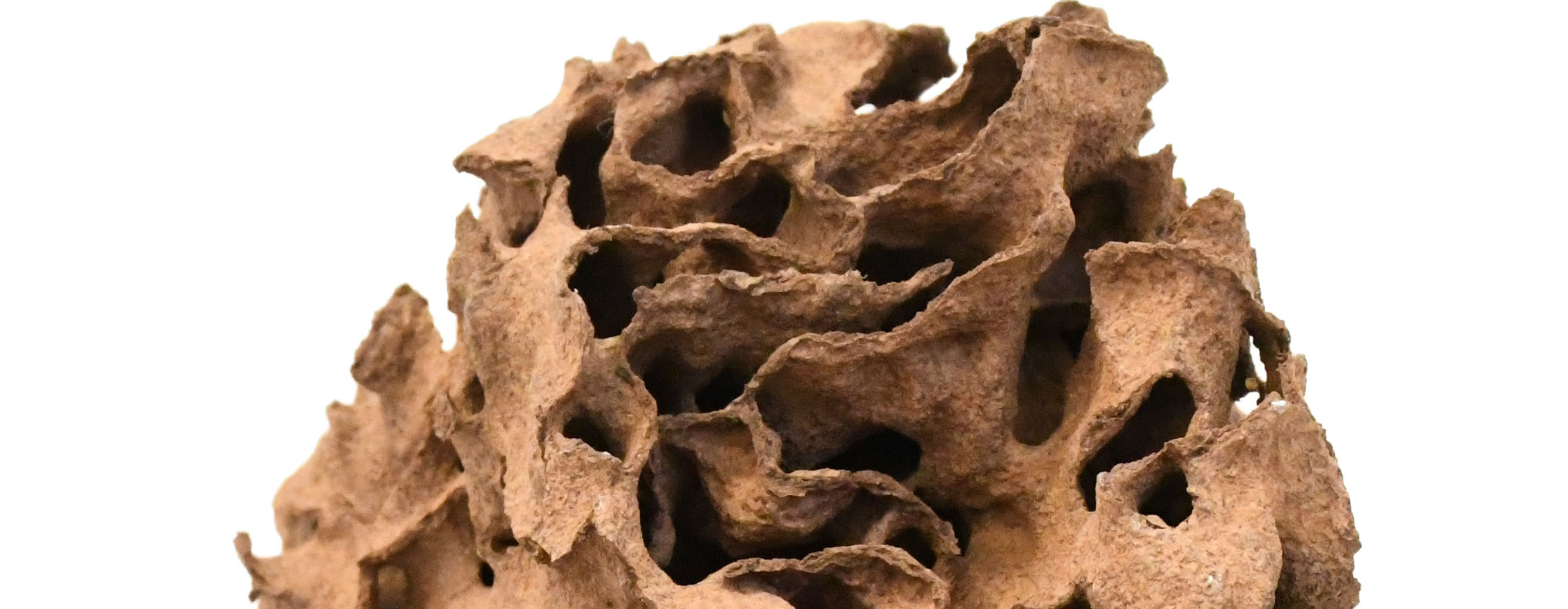Roehampton-led research identifies the rules that termites use to build their nests
- Wednesday, July 22, 2020
The local curvature of a wall has been identified as the simple building ‘rule’ that termites use to build their complex nests, according to new research conducted by the University of Roehampton.

Termite nests are hugely complex, and we still know very little about how thousands of tiny termites coordinate their activities to create such impressive structures. The research team hypothesised that it is the local curvature of the nest’s surface that triggers each termite to deposit new pellets and continue their building. Local curvature is when the surface of the nest deviates from being a flat surface, or from a saddle shape.
By scanning real nest samples of two species of arboreal Nasutitermes with a micro-CT scanner and comparing this to computer simulated nests that grew based on their hypothesis – that termites respond to the local curvature – the research team found a strong resemblance between the real and simulated nests.
This single rule of responding to the local curvature was sufficient to reproduce a number of the features of real nests using computer simulations. Termites have a high tendency to deposit new pellets wherever there is a region within their nest of high curvature, an unfinished wall, edge or pillar.
Dr Giulio Facchini, a post-doctoral researcher at the University of Roehampton said “our identified building mechanism can reproduce many features of termite nests, but we are aware that different termite species can produce nests with different sizes, shapes and internal structure. We aim to be able to further tune and parametrize our model from real data of termite nests to be able to explain how small changes in the building rules or in the building materials can produce the huge diversity of structures that we find in nature”.
The research team included Dr Giulio Facchini and Dr Andrea Perna of the University of Roehampton, who worked alongside Dr Stéphane Douady (Laboratoire Matiére et Systémes Complexe, Université Paris Diderot) and Dr Alexandre Lazarescu (Institut de Recherche en Mathématique et Physique). Giulio Facchini is a Newton International Fellow based at the University of Roehampton. This research is funded by the Royal Society.
The full paper can be viewed on the Journal of the Royal Society Interface here.
Much of this research was conducted in the University of Roehampton’s state-of-the-art Ecology laboratories, which include specialised research equipment such our micro-Computed Tomography scanner which allowed the researchers to take 3D images of the nests.
You can find out more about the Department, including our wide range of undergraduate and postgraduate degrees here.